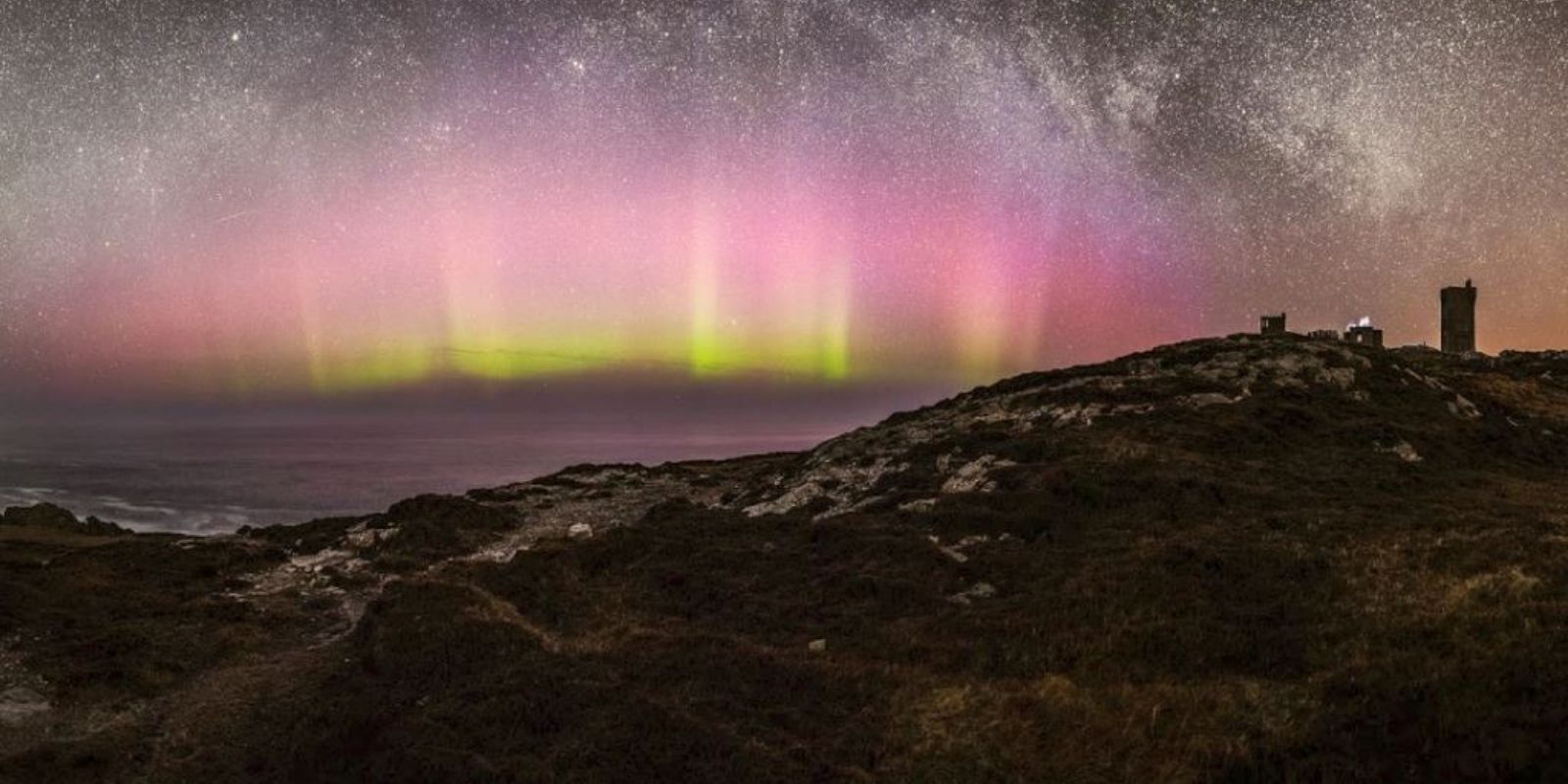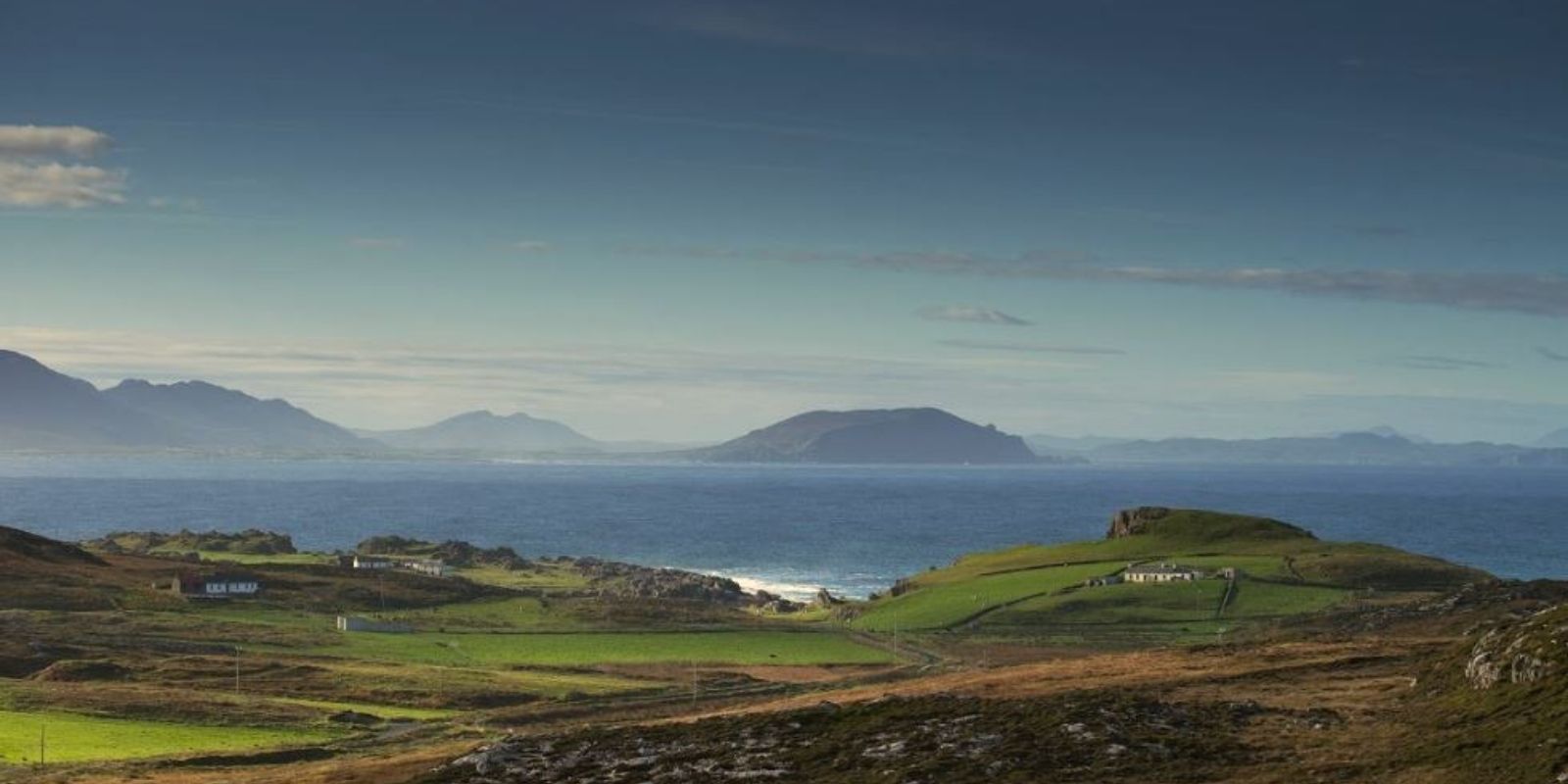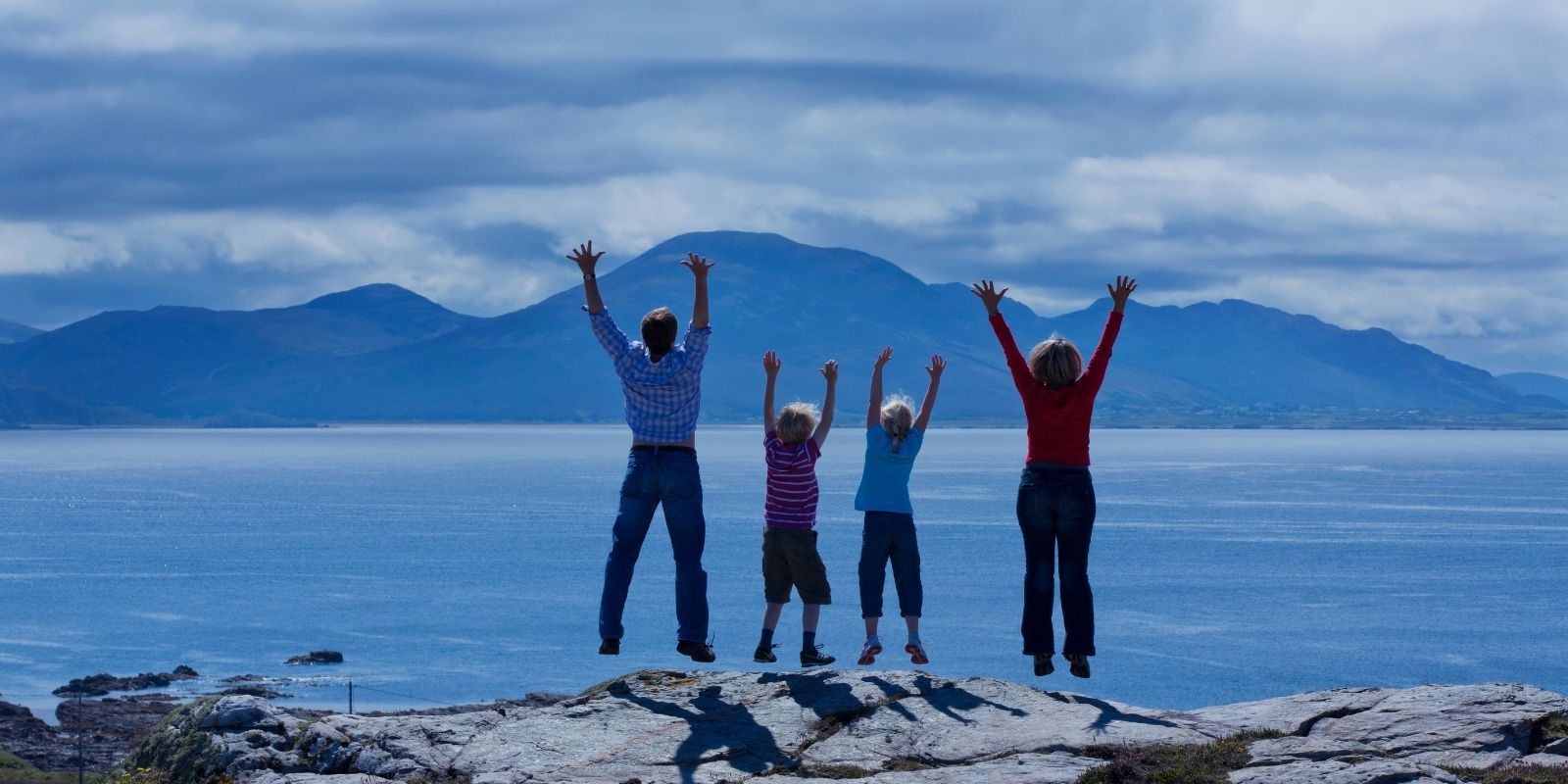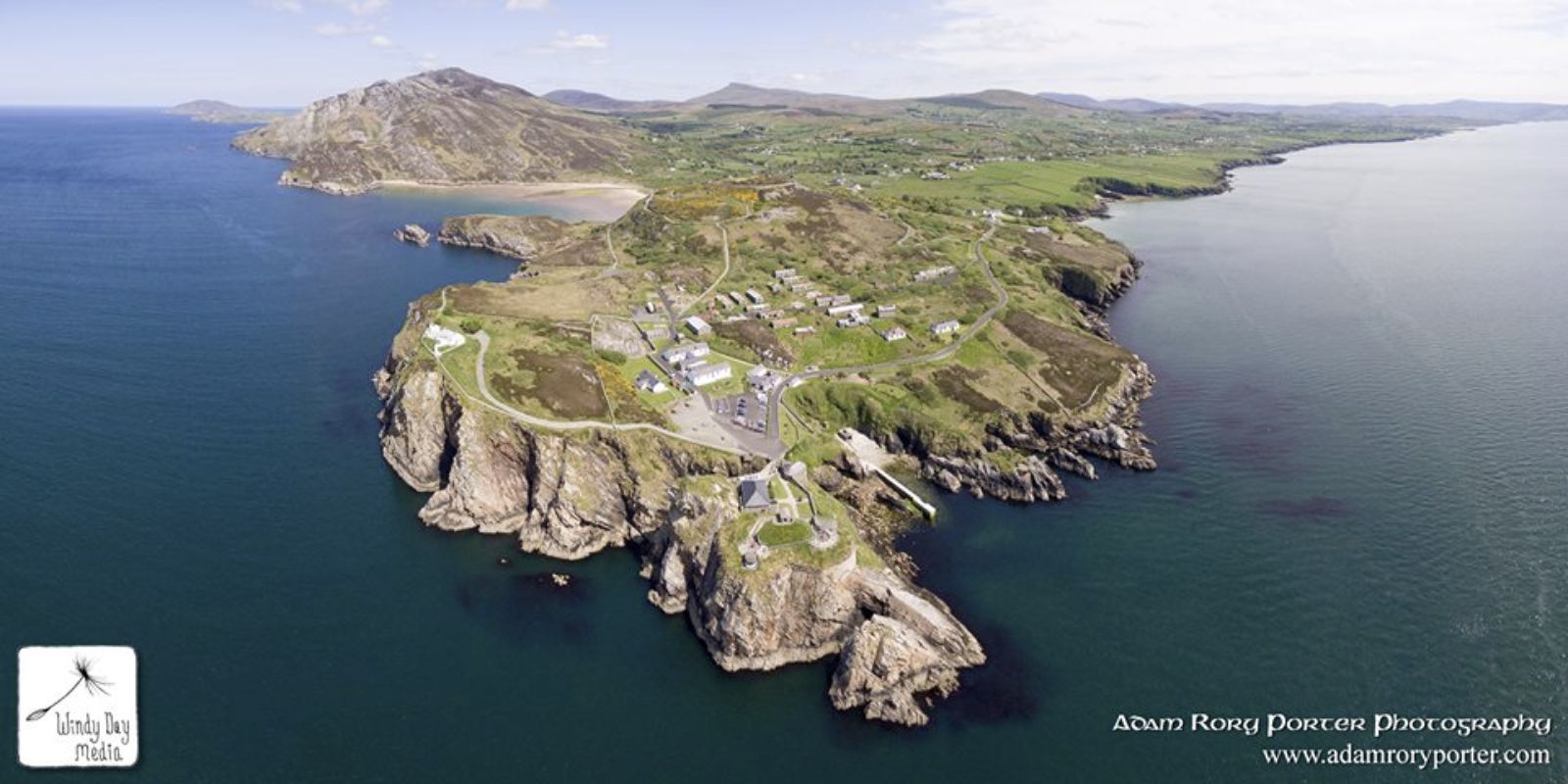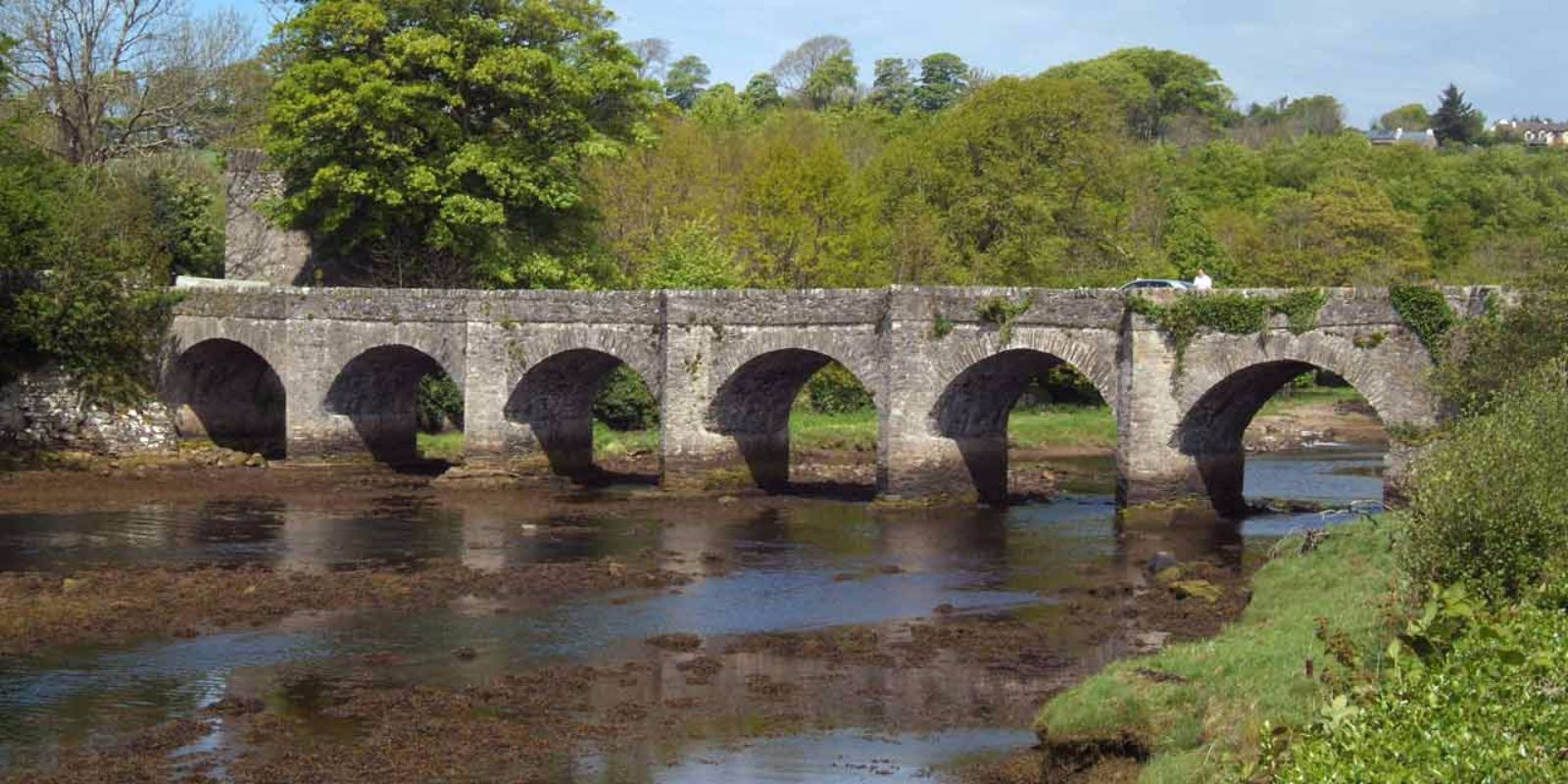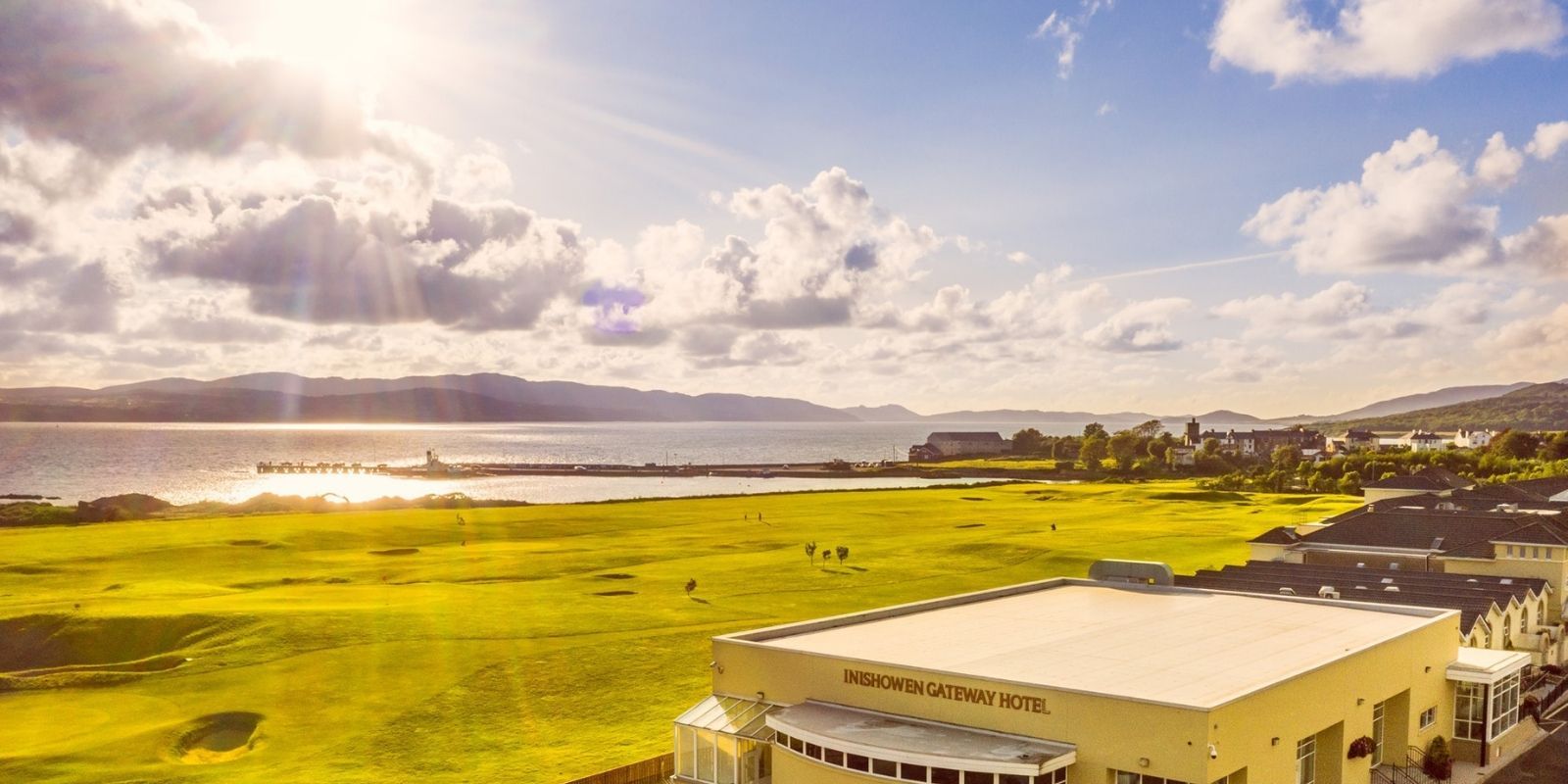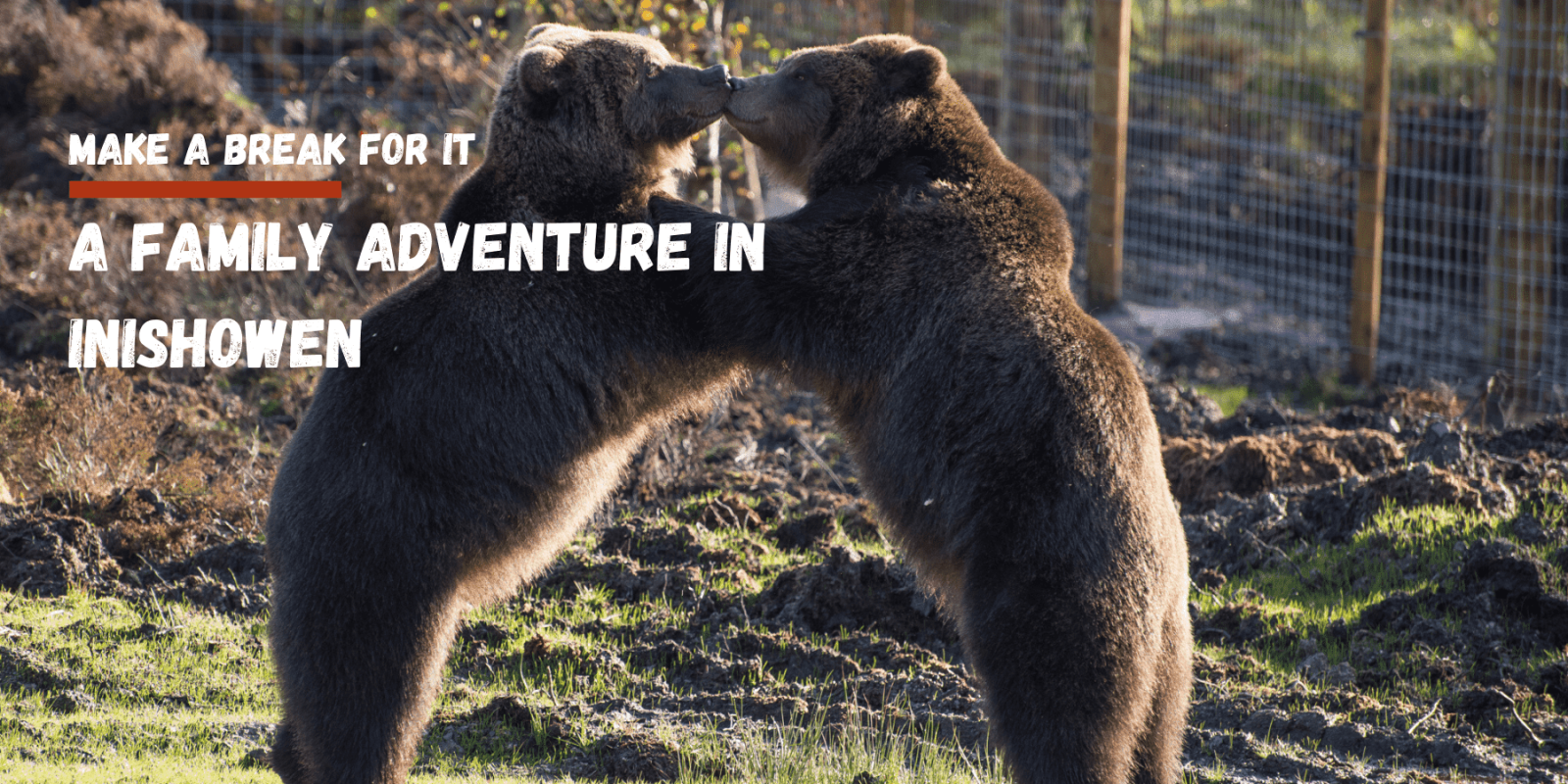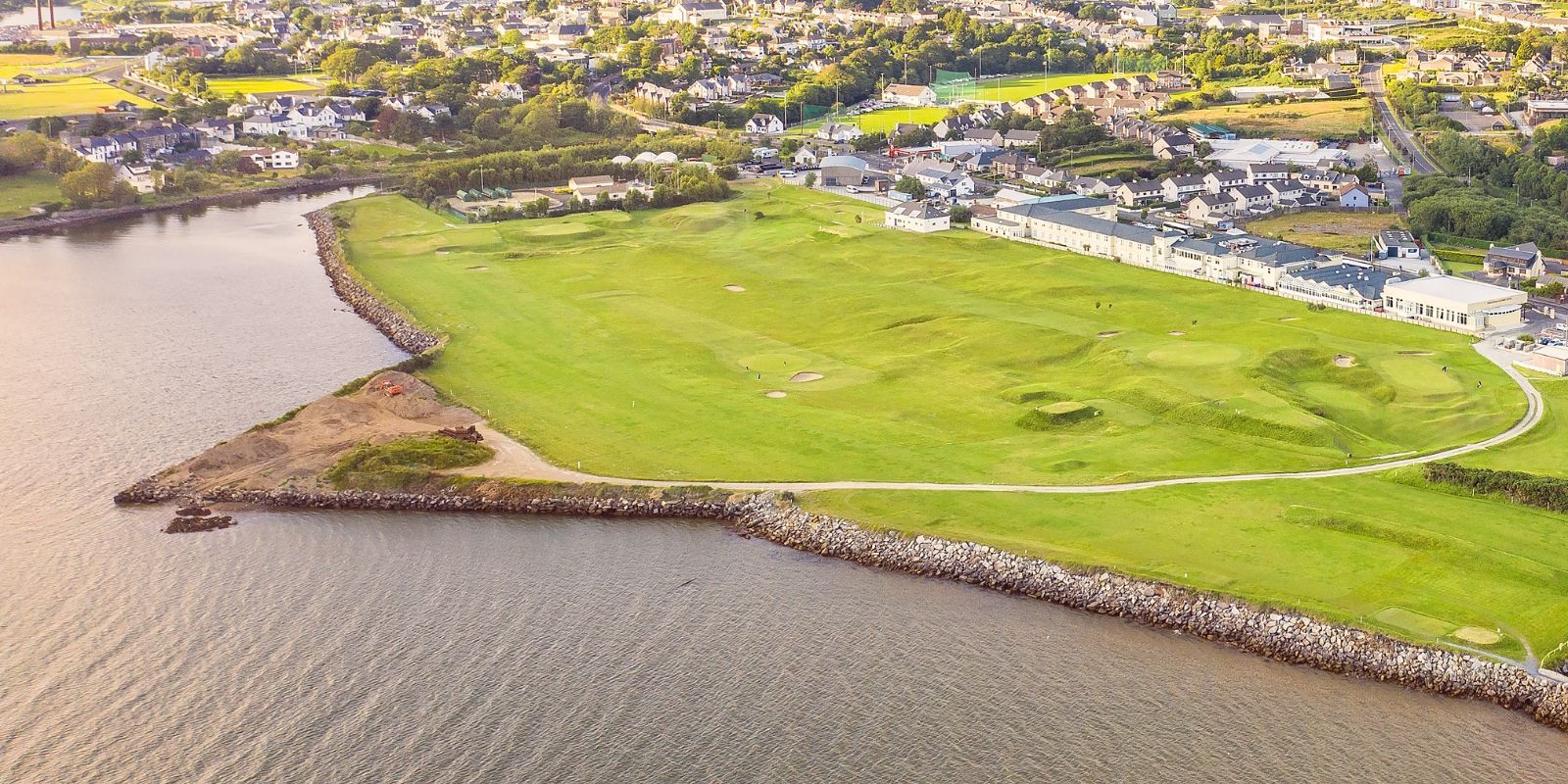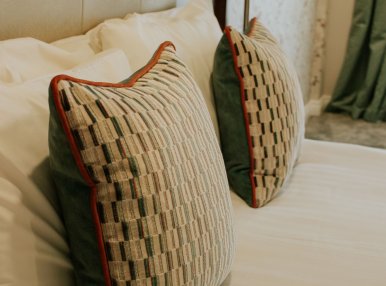Inishowen 100
Voted one of Ireland's Top 10 Scenic Drives in the Irish Independent 2010
Inishowen 100
It may sound like a formula 1 race, but it gets it name from the approximate distance in miles of the sign-posted drive, which officially starts in Newtoncunningham on the Inishowen Peninsula. You will certainly not wish to break any speed records as you linger and savour the many historical gems in Inishowen, Irelands largest Peninsula, has to offer.
Newtoncunningham
As can be seen from the surrounding rich and fertile landscape, farming has long been the mainstay of life in this area. A key feature is the Church of All Saints, a new Catholic church, with a most unique design showing it as a boat in full sail. It is well worth a visit to view varied array of artwork it contains including, a large oil painting by Thomas Ryan, RHA commemorating how the land for the first church here was granted by a local landlord; Mr.Willaim Forward.
Burt
Home to one of Inishowens most iconic sites, the Grianán of Aileach in Burt takes the form of a massive ring fort on the summit of Grianan Hill which has been the Sentinel of Inishowen for 3000 years, guarding the narrow approaches caused by rivers Foyle & Swilly. Nearby is Burt Castle, one of the Clan O'Dochertaigh strongholds in Inishowen, was built in the 16th Century during the reign of Henry VIII. The unique award winning designed St. Aengus' Catholic church, which opened in 1967, was designed by Liam McCormick, who took inspiration from circular shape and the Grianán of Aileach.
Burnfoot
This is the anglicised version of the name "Bun Na hAbhann" of "Foot of the River" and shows the Scottish term for a small stream of rivulet. This village is an excellent starting off point when visiting the nearby Inch Wildfowl Reserve.
Inch
Situated on the southwest corner of Inishowen is Inch Island and Blanket Nook. While the name of the place is Inch Island, it is in fact attached to the mainland by a wide causeway. Anywhere on this island is excellent for bird watching especially from the causeway itself. Between Inch Island and the mainland lies a region of drained polder land, which has an area of 1,200 hectares. Here whooper Swans are of international importance with, on average, 300 birds over-wintering. In the 15th Century, Sir Cahir O'Doherty built a castle near the Southern end of the island, parts of which are still visible today. There is also fully functioning pier on northern the side of the Island with easy access to Lough Swilly.
Fahan
This is the site of the ancient 7th Century Abbey of St. Mura. In the graveyard around the monastery there is an ancient cross slab, the Cross of St. Mura, and it marks St. Muras grave who died in 654A.D. Other artefacts are Wishing Stone and Greek Cross both which are set in the outer wall surrounding the site. Legible marked graves date from 1652 and include names of the early plantation settlers in the area. Another grave worthy of a note is that of Agnes Jones a nursing colleague of Florence Nightingale who died in 1868. Across the road in the grounds of the Protestant Church is the large grave in which are interred 68 victims of H.M.S Laurentic which was lost on January 26th 1917 at the mouth of Lough Swilly following an attack by a German U-Boat. A major claim to fame for this village is that Cecil Frances Alexander, wife of the then Anglican Bishop of Derry wrote "There is a Green Hill Far Away" and "Once in David's Royal City", while living in a local rectory . The Focal point of Fahan is the Lough Swilly Marina, which provides a sheltered anchorage for 400 boats and yachts of varying sizes.
Buncrana
Buncrana is located on the banks of Lough Swilly, which translates from the Gaelic into "Lake of Shadows". The importance of Lough Swilly to Buncrana during W.W.1 became evident when Admiral dellicoe moved his grand fleet from Scapa Flow to Lough Swilly. The Clan O'Dochertaigh has has a long affiliation with this town and the historic O'Dochertaigh's Keep still stands near the lovely walk towards Fr. Hegarty's Rock. Lough Swilly has a rich varied history; it is where John Newton was inspired to write the world famous hymn "Amazing Grace" after being saved from a severe storm on April 8th 1748. Also nearby is the spot where Wolf Tone was taken ashore following his capture on board a French warship during the 1798 rebellion. The town also has a beautiful coastal walk and riverside park.
Dunree & Desertegney
Fort Dunree, which is perched majestically on a rocky outcrop overlooking Lough Swilly, demonstrates its vital role in coastal defence and neutrality protection with a complete expose of coastal artillery. Newly developed hill-sidewalks enable visitors to get breath views of the Atlantic and Fanad Head. The monastic site of Desertegney is dedicated to St. Columba and the area is one of spectacular scenery overlooking most of Lough Swilly, while in the distance lie the Urris Mountains with the Famous Gap of "Maghmore" which allows access to the Urris/Dunaff Peninsula.
Mamore Gap
With the views of Leenan and Urris, the Gap of Mamore, five miles north of Buncrana passes between Mamore Hill and Urris at 800ft. above sea level. This is a favourite spot for tourist and locals alike with its spectacular views of the Inishowen Peninsula and beyond to the broad sweep of the Atlantic Ocean. For theenergetic it's good starting point to explore the Urris Hills to the west or Mamore Hill and Raghtin to the east.
Urris
The trip down from the Urris Mountains through the "Gap" towards Urris on the steep winding road is one of the most breath taking in the country and it is well worth your while to stop and take in the magnificent vista before, and below you, stretching all the way to Dunaff Head of on a clear day you can see Tori Island. Just at the base of the mountain lie five beautiful Irish cottages, painstakingly restored to their original condition.
Clonmany
This traditional Irish Village lies beside a river overlooked and sheltered by awe-inspiring mountains: Bulbin, rising to 1,500 feet, (457.1M), Raghtin Mór rising to 1,656 feet, (504.7M), Binion at 830 feet, (252.9M) and towering overall; Sliabh Sneacht at a mighty 2,019 feet (615.3M). Close to the village and well signposted is the popular recently restored walk to Glenevin and the Pól Cás waterfall. Also nearby you can enjoy a stroll on the beautiful Binion and Tullagh strands.
Ballyliffen
One of the Chief attractions of this delightful little seaside resort is its magnificent stretch of golden sands over 2 miles in length, known as Pollan Strand which is superb for windsurfing. There is also a children's playground at the beach. Carrickabraghy Castle, built around late 1,500 A.D. was a stronghold of the Clan O'Dochertaigh. It is accessible by walking along the beach. Ballyliffen is also home to one of Irealnd's finest golf clubs with two outstanding, contrasting links courses. The Old Links and Glasheady Links set in natural terrain and incredible dunes, are "a must" for golf fanatics and a favourite of Nick Faldos.
Isle of Doagh
On the route of From Ballyliffin to Carndonagh, this was an island until after the Ice Age, when melting ice left the sea at more than 50metres below is present level. 6,000 years ago it was again a Island but gradually gravel beaches began to link the island to the mainland and wave action pushed ashore sand which blown into dunes. There are records showing the Isle of Doagh itself inhabited as far back as the early A.D 800's. The Isle of Doagh (Bar Mouth or Lagg) is a wonderful location for spinning or Free-lining Sand Eel from both sides of the Channel for Sea trout. Doagh Famine Village Visitor Centre, Inishowen's top visitor attraction, which traces the changing times of Ireland from 1800's to the present day, is located at the Isle of Doagh.
Carndonagh
The Chief Glory of this market town is the famous St. Patrick's Cross. It has been dated to the 7th century which would make it one the very early Christian crosses outside mainland Europe. The Cross is 11 ft. 6i inches in height and is regarded as one of the finest examples in Ireland of low relief carving remaining from ancient times. A few feet from the cross are two pillar stones each carved on all sides. The most impressive sight to greet the visitor enroute into town will be the magnificent granite-built Sacred Heart Church, which towers above the town centre and diamond where four roads from the main compass points meet. Every single stone for this magnificent building was hand carved and lay by Master Stone Masson’s from all over Ireland.
Malin
An interesting and unspoilt 17th century plantation village picturesquely situated at the head of Trawbreaga Bay. An interesting feature of the approach to the town is the bridge with its ten arches spanned the bay. It is the second largest stone bridges in Ireland. The original triangular village green is still intact, planted with limes, sycamore and cherries, and recently with oaks to commemorate the O'Doherty clan. All around the village are signs of the care that has won it many awards in the National Tidy Towns competition, including the much coveted overall prize in 1970. The Church of Ireland parish church has a fien three state battlemented tower with square pinnacles. The Lagg road to Malin Head takes the visitor along the shores of Trawbreaga Bay. The Bay is an area of regional ornithological importance and has been declared a wildlife sanctuary. The road rose sharply following the coastline around the Knockamay Bens with Magnificent views of Trawbreaga Bay from the car park. On a clear day Tory Island can be seen to the west of and to the north lies the fine sandy beach known as the "Five Finger" backed by some of the highest dunes in Europe.
Malin Head
Visitors should not miss Banba's Crown Malin Head. It is not just Ireland's most northerly point, but an area of great scenic beauty and of historical, scientific and ecological importance. The circuit of the Head will take you past the Radio Station, built in 1910, and round the coast to Banba's Crown, the northern tip of Ireland. Here a tall derelict building known locally as " The Tower" was built in 1908 by the Admiralty, and later used as a Lloyds Signal Station. During the Second World War, the small huts were built and used by our defence forces to keep a lookout and protect our neutrality. It is also a perfect starting point for a ramble along the cliffs to Hell's Hole, a remarkable subterranean cavern 25 feet long and 8 feet wide, into which the tide rushes with great force. Nearby is a picturesque natural arch called the Devil's Bridge.
Glengad
This area is the scenic "Inishowen 100" coastal route and you can reach it by driving through some of the most rugged and scenic countryside imaginable and well worth a visit. For generations Glengad has been a traditional fishing area, a practice still continued today and where visitors can take in the views of Inishtrahull, Rathlin Islands are further out to sea, the Western Isles of Scotland.
Culdaff
A picturesque village, with tow fine stone bridges and a triangular green featuring a now disused pump house. In Culdaff River you can see St. Boden's Boat, a stone in which he crossed from Scotland, only the sceptic with doubt the marks of his fingers! Situated on a pretty estuary, there are beautiful sandy beaches which have Blue Flags status. The Culdaff area is fine walking country with cliff scenery stretching northwest to Malin Head. The famous Shakespearian actor, Charles Macklin, was born here and his memory is celebrated with an annual festival.
Kinnego Bay
The scenery as you approach this beautiful cove is quite breathtaking and when you descend to the actual beach you feel as if you are in another world, feeling totally cut off by the sea front and the sheer cliffs to every side. Glenagivney, called the "Queen of the Inishowen Glens", runs inland from Kinnagoe Bay towards Lecamy. At Lecamy is a an example of an ancient sweat-house. They were and early form of Turkish or sauna bath. It is believed that the almost enclosed chamber was heated like an oven and people crept in and then, having been sweated, rushed out to immerse themselves in cold water. Tradition has it that they were used as a cure for rheumatism. It was just off Kinnego Bay in 1970/71 that divers found the Spanish Armed Transporter, La Trinidad Valencera, a 1,100 ton wooden ship, which, badly damaged in a storm, had limped into anchor offshore on September 14th 1588 and sank two days later.
Bocan, Gleneely, Carrowmenagh, and Redford
These areas must also be referred to en-bloc because tehy contain possibly the widest range and greatest number of historical sites and ancient monuments in Inishowen. Amoung the ancient sites to visit in these areas are, Cloncha Church, Cross of St. Boden, Larrahirril Court Tomb, Bacon Stone Circles, Kindroyhead Standing Stone and Carrowmore High Cross. These areas have also been the birthplace of many well known authors who have contributed greatly to our knowledge of our past and still continue to supply us with some wonderful reading materials Brian Bonner, Sean Beattie, John A McLaughlin, Hazel Clarke/McIntyre, Evelyn Ruddy, Neil McGFrory, and Bridget O'Toole have written some superb works on various aspects of life in the area as well as local and general history. Their publications are available for sale in the Tourist Office in Buncrana. Nearby is Tremore Bay where in 1848 a young Irelander, Thomas D'Arcy McGee escaped from his pursuers and eventually ended up in Canada and a Government Minister.
Green Castle
This is a popular resort with a fine beach. It is an important commercial fishing port. It was once a place of considerable importance. Richard de Burgo, the Red Earl of Ulster selected the place as an site for a castle to dominate the O’Donnell’s and the O'Dohertys of Inishowen. This village hs been synonymous with the sea for centuries and many generation of its people have sailed the seven seas. It is therefore only fitting that there Maritime Museums and Planetarium, with hundreds of relics of the sea, situated here, along with the Irish National Fisheries School, which prepares young men and women for a life at sea both practically and academically.
Shrove
A favourite walk in Shrove is a port-a-doris - Port of the Door. The "Door" to the lovely cave is a natural arch. There is a wishing well where those who drink the water are said to have their wishes granter. Near Shrove, there is a ancient cross inscribed piller stone and a small modern cross. A spring dedicated to St Columcille spouts near the stone. The Saint is said to have stopped here for water on his way to lona. Located close to Inishowen Head, this area has many lovely small coves including a beautiful sandy beach known as "The Big White Bay" overlooked by Shrove Lighthouse. Its main attraction of course has to be the fact that it is a European Blue Flag Beach and with thestandards that apply to this type of accreditation, ensures that this beach is also and excellent place for bathing.
Moville
A busy scenic market town, located along the banks of the Lough Foyle, Moville can also boast of having the ancestral home, called New Park House, of Field Marshall Montgomery of North Africa and Elalemien fame. To further emphasise this link, overlooking the shorefront is a row of wonderful Victorian houses built in 1884 and named Montgomery Terrace. These houses have all been tastefully restored to their former glory.
Redcastle
Ancient maps show two prominent castles along the banks of Lough Foyle, one at Redcastle, which was then called Caire MacEwlyn, and the second at Whitecastle, which was then called Garnagail. Both castles belonged to Clan McLaughlin. Nothing remains of these castles today.
Quigley's Point
Located on the eastern shore of the Inishowen Peninsula, overlooking Lough Foyle, at probably its widest point. It lies on the main road between Derry City and Moville and is a key junction for travellers heading for most areas of north Inishowen. The village of Quigley's Point is also known as "Carrowkeel" as it is marked as such on Irish Ordinance Survey maps. However all local signage and the local post office give the name "Quigleys Point" to the village.
Muff
A small border village on the border of Donegal and Derry. The Church of Ireland built by the Harts pf Kilderry House dates from 1737. The house itself, part Palladian in design, dates from the 18th century. Muff is in the parish of Iskaheen or in Gaelic Uisce Chaoin, "pure waters"-because of a holy well near an ancient church, formerly situated in the area. This parish has numerous famous historical connections. One is the ruin of an old church, which lies outside the village opposite the existing Catholic church of St Patricks. This old ruin with its graveyard is reputed to date from the 8th century. The second famous item in this parish is the plaque inserted in the wall of this same old church, which reads: Eoghan, Prince of Inishowen, Son of Niall of the Nine hostages, died 465 if grief for his brother Conall. Baptised by Patrick and buried in Uisce Chaoin. The third is the "Giant Stone" locally known as the "Morton God" it is a collapsed dolmen or an ancient burial place, thought to be the biggest in Inishowen. Such monuments were used as graves for chieftains and also as "alters" for pagan worship.
For more information on things to do and see in Buncrana, click here.

